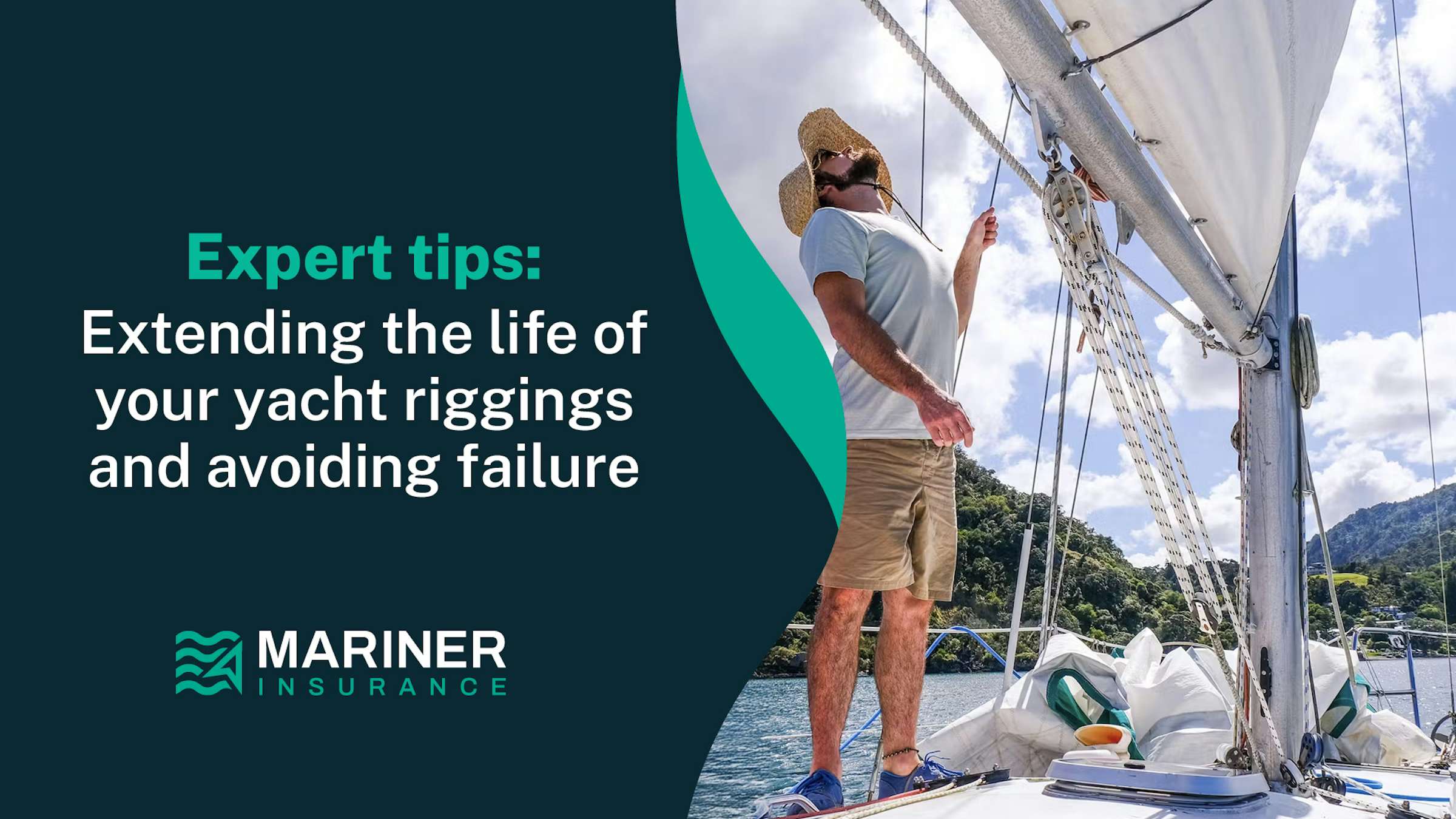
Expert advice: Extending the life of your yacht riggings and avoiding failure
One of the most common points of failure we see on yachts in New Zealand is their rigging. To help you avoid that we spoke to a man who knows a thing or two about the topic - Richard Hulston from Independent Riggers in Auckland.
Introducing Richard & Independent Riggers
Over a long and varied career, Richard has gained considerable experience inspecting, maintaining and repairing yacht rigging:
“I’ve been rigging all my career really, so that’s 35-plus years. I started back in the day with Terry Gillespie and he was the best rigger in the southern hemisphere, you know, he was the man,” Richard said.
“We’ve travelled to the UK, we’ve done the superyacht industry, the performance industry, the America’s Cup.”
After working on high performing vessels all over the world, Richard ended up back in New Zealand. He started Independent Riggers out in Half Moon Bay and now has five talented young guys working for him, including sparkies and engineers, plus a spot at the marina with a hard stand and all the facilities he needs:
“And we’re fully mobile. So we work the far north to every marina in Auckland and also in the Pacific Islands.”
Independent Riggers offer a wide array of services, from rigging, tuning and rejigging, to boat management, fitouts, systems and inspections.
The (short) lifespan of yacht rigging
There are generally two types of yacht rigging, either 1/19 stainless or rod rigging. Rod rigging is more performance orientated, it’s smaller in diameter and has a lot less stretch, so the performance guys like it. This stuff is simple, clean and tidy.
That said, the vast majority of vessels in New Zealand have 1/19 stainless rigging, which can have a surprisingly short lifespan:
“I guess the industry standard is 8-10 years, you really need to be looking at it regularly. No one wants to stand back and say she’ll be right anymore.”
The importance of regular inspections
Although Richard says most rigging will last 8-10 years, you still have to be careful before then:
“Even with brand new boats, maybe 2-3 years, we’re seeing failures often.”
On that note, Richard and the team at Independent Riggers do inspections as well, which can be handy for rigging maintenance and repairs as well as insurance. He reckons winter’s a great time to get onto it:
“You’ll get a better response from the rigger. It’s a visual inspection. We go top to bottom with heaps of photographs if need be. And it’s a good thing to do because it starts a service schedule, if you like.”
Richard adds that while most rigs last around 10 years max, he’s seen a few way past their use-by date:
“I’m seeing 20-25 year old rigs. Some boat owners are oblivious to it. They want a rig inspection and we don’t even want to go up in the rigs. I don’t trust my life up there. So why would you be outside at 35 knots?”
A good inspection will tell you when it’s time to get your rig replaced and help you keep on top of maintenance. Just like a car, components wear and will need to be replaced - so a yearly inspection and keeping an eye on things yourself goes a long way.
Insurance & yacht rigs
Inspections aren’t just good for keeping your rig in good condition, they can also be handy for insurance. A company like Mariner will usually get a survey before insuring a vessel and that survey will consider the condition of the yacht rigging.
Boat insurance policies are standard throughout New Zealand and they have standard exclusions. These policies are meant to cover you for unforeseen events - stuff like corrosion and wear and tear aren’t covered. Now let’s say you’ve got stainless steel wire in a corrosive marine environment with hardware attached to it. It's part of the system and if the system fails because it’s worn and corroded, you’re unlikely to succeed with an insurance claim. After all, 10+ year-old rigging failing due to wear and tear isn’t an unforeseen event.
To prevent this from happening Richard says yacht owners need to regularly inspect rigging and replace components when they’re worn:
“They can walk around the boat themselves and educate themselves about what they might be looking for. Also check the tune of the rig. Poor tuning can add to wear and tear.”
Richard adds that it’s worth getting rig inspections even for new vessels. After all he’s seen rigging fail after as little as two years:
“You don’t expect to see it, but that’s why you need to keep an eye on it ... An inspection is inexpensive and good value for money. Then you’ve got the invoice and you can put that somewhere to prove you’ve had it done.”